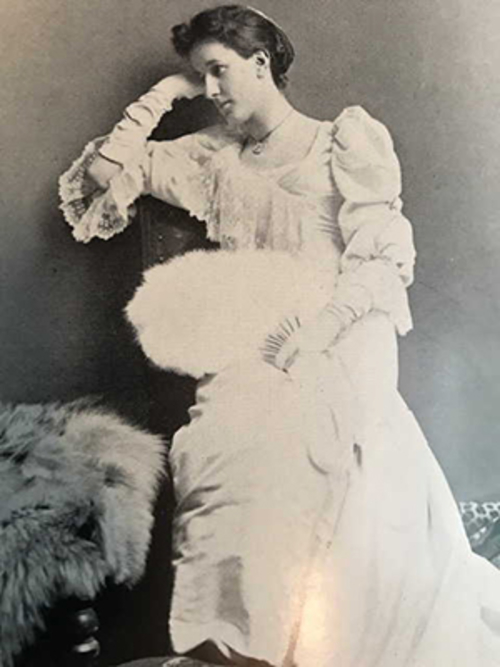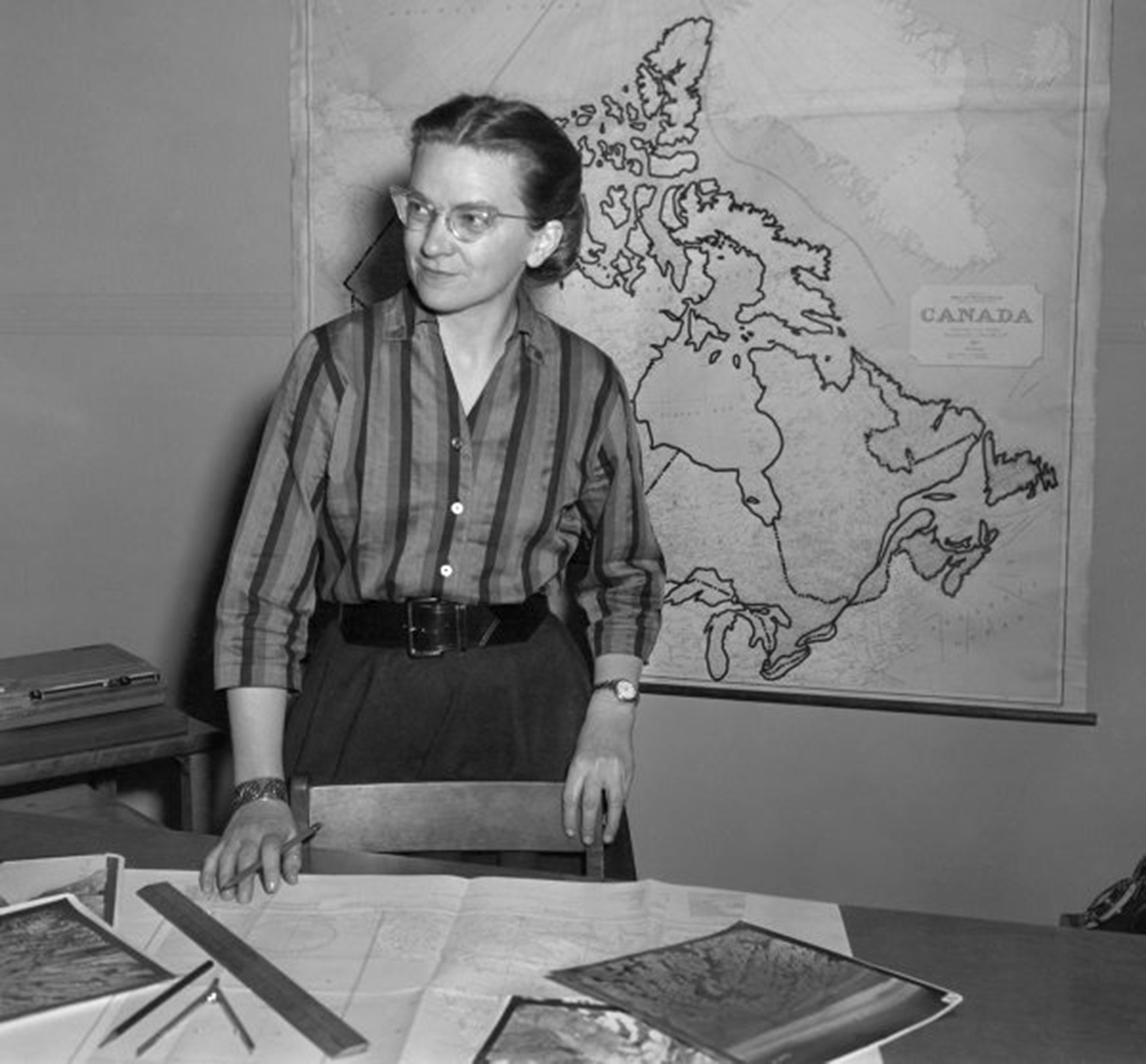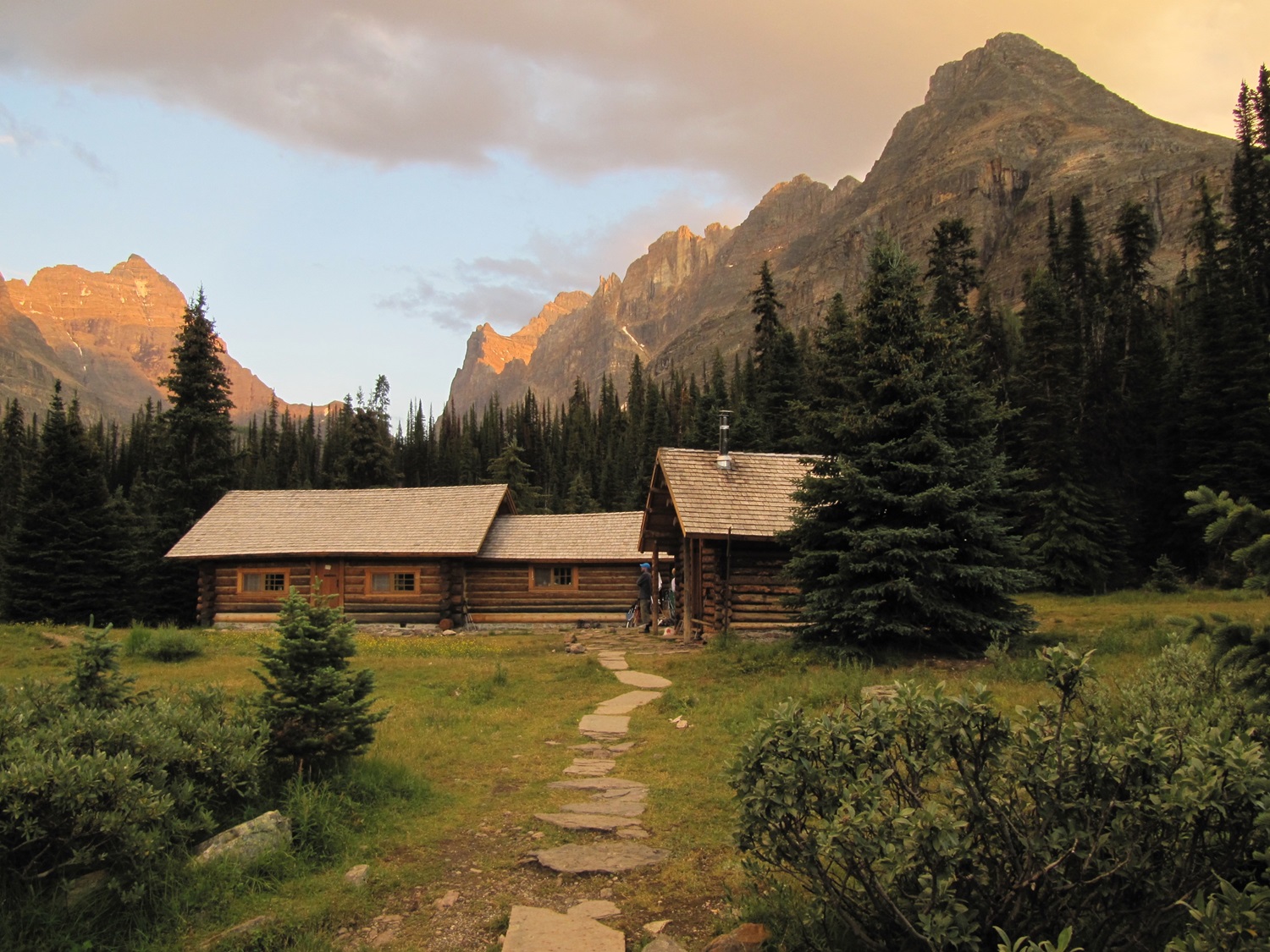Mary Edith Tyrrell (née Carey), co-founder and first president of the Women's Association of the Mining Industry of Canada, writer (born 11 September 1870 in Saint John, NB; died 14 October 1945 in Toronto, ON). Tyrrell, along with 19 other women, founded the Women’s Association of the Mining Industry of Canada in 1921 to create a community among mining wives. Her work with the organization was an example of women’s indirect involvement in the mining industry. Tyrrell also published works about her experience joining her geologist husband, Joseph Burr Tyrrell, in Yukon during the Klondike Gold Rush.

Early Life
Mary Edith Carey Tyrrell was born in 1870 in Saint John, New Brunswick. Although her father, a reverend, supported women’s access to education, Tyrrell initially did not attend school because she was not strong enough, having only weighed three pounds at birth. She had been nicknamed “Dollie” as a child due to her size. She spent considerable time in the family library growing up and eventually attended high school in England, when her family moved there for a time. They returned to Canada after six years, settling this time in Ottawa.
Marriage
In Ottawa, Mary Edith Tyrrell met her husband, Joseph Burr Tyrrell. Joseph was a geologist, explorer and map-maker with the Geological Survey of Canada (GSC). In 1884, he became famous for discovering dinosaur bones and coal deposits in Alberta. The couple married in 1894 and had three children.
Joseph’s work meant he was often away for long periods of time. While in Yukon during the Klondike Gold Rush, he was inspired to change careers by the thousands of stampeders who sought their fortunes. Joseph left the GSC and established a mining consulting business in Dawson City. Tyrrell and their daughter, Mary, their only child at the time, joined him in Dawson for a period. She described her experience travelling to the Klondike, living in the newly established Dawson City and the people she met along the way in the Canadian Courier and a 1938 book, I Was There: A Book of Reminiscences.
In 1907, Joseph moved his business to Toronto to be closer to his family and the emerging mining industry in Northern Ontario. His 1924 investment in the Kirkland Lake Gold Mine Company, which produced over $39 million in gold, made the family wealthy.
Women Writers of the Klondike Gold Rush
At the height of the Klondike Gold Rush, women made up, at most, 10 per cent of Yukon’s population. Mary Edith Tyrrell was not the only woman to document the stampede. American Mary E. Hitchcock published Two Women in the Klondike: The Story of a Journey to the Gold-Fields of Alaska in 1899 about her and Edith Van Buren’s experience as luxury travellers to Yukon. Alice Freeman (writing as Faith Fenton) was a Canadian journalist who was sent to report on the Gold Rush for the Globe newspaper. Other women journalists came from around the world, including Brit Flora Shaw and American Emma Kelly.
Mining Women
While her husband was a renowned geologist, Mary Edith Tyrrell taught herself the subject by studying Joseph’s geology texts. She also witnessed major mining discoveries first-hand, as she sometimes accompanied Joseph on his trips across Canada.
Did you know?
While Mary Edith Tyrrell learned about geology through self-study, the first woman in Canada to earn a degree in geology was Grace Anne Stewart, who graduated with a BA in Geology from the University of Alberta in 1918. Stewart later went on to earn a master’s degree from the University of Alberta in 1920 and a PhD from the University of Chicago in 1922.
During the First World War, Tyrrell was involved with the Women’s Auxiliary to the American Institute of Mining and Metallurgical Engineers. The Auxiliary was created when wives of American Institute of Mining and Metallurgical Engineers members banded together in 1917 to raise money and provide support for American soldiers in Europe. Tyrrell’s experience with the group inspired her to create something similar in Canada: an organization for mining women to support each other.
Within a few years, Tyrrell had made this a reality. In 1921, she and 19 other mining wives established the Women’s Association of the Mining Industry of Canada (WAMIC). The goal of WAMIC was to create a community among mining women and support the community and industry. During Tyrrell’s life, WAMIC supported causes such as war veterans, schools, disaster relief and the war effort. Tyrrell served as the association’s first president for three years. Her involvement in WAMIC serves as an example of one of the myriad ways that women were indirectly involved in the mining workforce throughout Canadian history.
Honours
Mary Edith Tyrrell passed away in 1945 in Toronto, at the age of 75.
In 2021, Tyrrell was posthumously inducted into the Canadian Mining Hall of Fame for her contributions to the mining community. She was the fourth woman to receive this honour, after Viola MacMillan (1991), Kathleen Rice (2014) and Shaaw Tláa (Kate Carmack) (2018). Patricia Dillon was inducted at the same time as Tyrrell.
The Women’s Association of the Mining Industry of Canada awards the Edith Tyrrell Award and Medal annually to mineral engineering or geology students at the University of Toronto.

 Share on Facebook
Share on Facebook Share on X
Share on X Share by Email
Share by Email Share on Google Classroom
Share on Google Classroom




